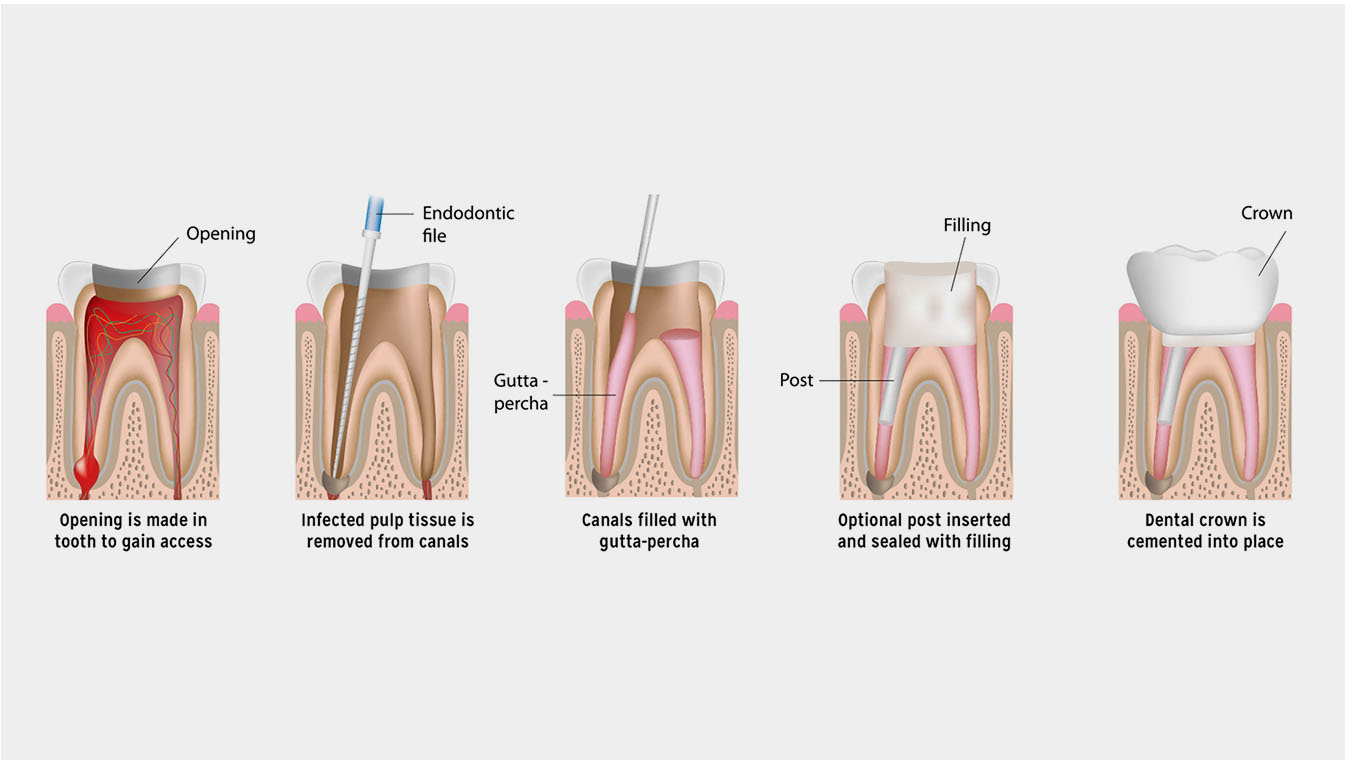the dental clinic
Dr. Rahul Shah
Dr. Deanna Lue
Dr. Janine Koutsaris
4869 Dundas St W
Suite 201, Toronto ON
M9A 1B2
(416) 233 9581
info@thedentalclinic.ca
Root canal treatment or endodontic treatment involves removal of the pulp that is located inside of the tooth by a dentist or endodontist. This type of treatment is completed in one or two appointments.
The inside of the tooth houses canals filled with blood vessels and nerves that give life to the tooth. If the tooth’s pulp becomes infected, inflamed, injured or dead, root canal treatment can save the tooth without the need to have it removed or extracted. If the tooth is extracted, it leaves an empty space that can result in bone loss or drifting of nearby teeth into the area.
Lingering pain or sensitivity to hot or cold items, even after the item has been removed.
Small, pimple-like protrusion on the gum near the area with pain.
Swelling or tenderness near the area with pain.
Severe tooth pain while eating or when pressure is applied to the area
Darkened tooth appearance that is not due to staining

(1) An x-ray is taken to help diagnose the issue. The x-ray can help to show any areas of decay, infection or inflammation.
(2) Local anesthetic is given to the affected tooth, the same process that would be done with a dental filling.
(3) An opening is made in the tooth to gain access to the pulp for removal. The affected pulp is removed during a process called a pulpectomy.
(4) Once the affected pulp material is removed from the canals, they are filled with a replacement material called gutta-percha. In some cases, a post may be inserted into the root canal to provide extra support for the soon to be placed dental crown. The tooth is then sealed off a with a dental filling and a crown.
While most root canal treatments are successful the first time, in some cases, a second treatment is needed. During this second treatment or retreatment, the existing root canal filling material is removed, the root canals are cleaned and refilled again.
After treatment, your tooth may be a little tender for one or two weeks. Mild pain can be treated with over-the-counter pain relief medication. Severe pain and swelling are not common. If you experience severe pain or swelling, contact your dentist immediately.
If you are experiencing any of the signs or symptoms listed above, contact your dental office to schedule an exam before the damage and pain becomes worse.